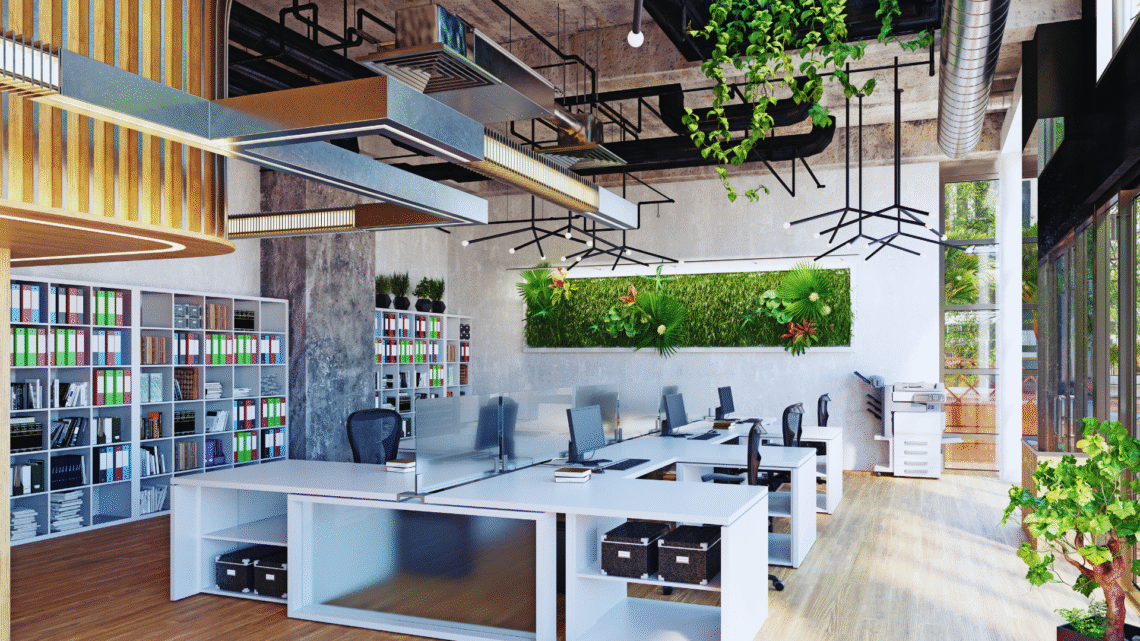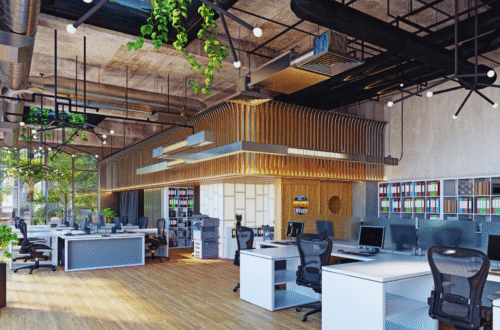
Office Design Ideas for Boosting Employee Productivity: Creating an Inspiring Workspace
Effective office design can significantly enhance employee productivity. By incorporating elements such as flexible workspaces, natural light, and ergonomic furniture, companies can create an environment that fosters focus and collaboration. These small adjustments not only improve comfort but also promote a sense of well-being among staff.
Additionally, integrating spaces for relaxation and social interaction can energise employees, reduce stress, and encourage teamwork. The layout of the office plays a crucial role in how employees interact with their tasks and with each other. Thoughtful design choices can lead to increased motivation and higher output.
As organisations seek to maximise productivity, exploring innovative office design ideas provides a valuable opportunity to enhance employee performance. Creating an inspiring space is essential to unlocking the potential of any workforce.
Fundamentals of Office Design for Productivity
Effective office design plays a crucial role in enhancing employee productivity. Several key elements influence how an office environment impacts work performance, including layout, natural light, and air quality.
The Relationship Between Office Design and Employee Productivity
Research shows that office design significantly affects employee morale and productivity levels. A well-structured office featuring modern corporate interiors fosters collaboration, focus, and creativity.
Elements such as colour schemes, furniture arrangement, and accessibility to shared spaces create an environment conducive to productivity.
For instance, open layouts can encourage communication but may also lead to distractions. Finding the right balance is essential to meet diverse work styles and preferences.
Principles of Effective Office Layout
An effective office layout enhances workflow and increases efficiency. This involves creating distinct zones for various activities, such as collaboration, focused work, and relaxation.
- Zoning: Designate areas for teamwork and quiet work.
- Accessibility: Ensure that spaces are easily navigable.
- Furnishing: Use ergonomic furniture to reduce discomfort.
Strategically placed meeting rooms and breakout areas further support dynamic interactions, helping to streamline processes and enhance teamwork.
Maximising Natural Light and Air Quality
Natural light and air quality are vital for maintaining employee well-being and productivity. Studies show that access to natural light boosts mood and energy levels.
Incorporating large windows, skylights, and light tubes into the design maximises daylight exposure. If you’re looking for a commercial window specialist to install these features, it’s worth consulting with a professional who understands energy-efficient sealing and ventilation—someone like Aeroseal or a similar provider in your area.
Additionally, proper ventilation systems play a role in maintaining air quality. Incorporating plants can help filter indoor air and improve aesthetics, thus contributing to a healthier work environment.
To complement these efforts, installing Window Shades or blinds can effectively control glare and indoor temperature without compromising natural light. This balance enhances comfort and reduces energy consumption, further supporting a productive and pleasant workspace.
By thoughtfully combining these elements: daylight maximization, efficient ventilation, greenery, and shading, workspaces can achieve a balanced environment that supports employee comfort, sustained focus, and overall efficiency.
Designing a Functional and Inspiring Office Environment
Creating an office environment that enhances productivity involves careful selection of furniture, strategic layout planning, and the incorporation of natural elements. These elements work together to foster both comfort and functionality.
Choosing Ergonomic Office Furniture
Ergonomic office furniture is crucial for employee health and productivity. It minimises strain and injury while accommodating various body types. Key features to consider include adjustable desk heights, lumbar support in chairs, and screen positioning to reduce neck strain.
Incorporating ergonomic solutions can lead to increased comfort during long working hours. Investing in standing desks or sit-stand desks allows employees to switch positions, enhancing focus and energy levels. Consider using anti-fatigue mats for those who opt to stand while working.
Integrating Greenery and Biophilic Elements
Incorporating plants into the office space not only enhances aesthetics but also boosts air quality and employee well-being. Elements of biophilic design, such as natural light and green walls, foster a connection to nature, reducing stress.
Selecting low-maintenance plants, like snake plants or peace lilies, can promote a vibrant atmosphere without heavy upkeep. Installing living walls or adding greenery to common areas can encourage relaxation and creativity, offering a refreshing break from work tasks.
Optimising Office Layout for Collaboration and Concentration
Effective space planning can redefine how employees interact and work. A balanced layout combines collaborative workspaces with quiet zones. Open areas promote teamwork through shared workstations or brainstorming hubs, while designated quiet zones allow for focused work.
Utilising acoustic panels can help minimise noise in collaborative zones, ensuring that teamwork does not disrupt individual concentration. Proper zoning can enhance workflow, catering to different work styles, whether by enabling collaboration or providing solitude for concentration.
Creating Zones for Different Workstyles
Creating specific areas within an office fosters various work styles. This promotes both collaboration and focused work, enhancing employee productivity.
Designing Collaborative Spaces and Meeting Rooms
Collaborative spaces are essential for fostering teamwork. They should feature movable furniture and adaptable layouts to encourage interaction. Incorporating technology, such as video conferencing tools, ensures remote team members can participate effectively.
Meeting rooms must cater to different group sizes and purposes. Smaller rooms can facilitate brainstorming sessions, while larger ones serve for formal meetings. Providing whiteboards and digital displays can enhance communication and idea sharing.
To ensure these spaces are inviting, natural light and comfortable seating are important. Bright colours and engaging artwork can stimulate creativity and innovation, making these zones appealing for team activities.
Establishing Quiet Zones for Focused Work
Quiet zones are essential for employees who need deep concentration to perform at their best. To create an effective quiet zone, consider partnering with trusted soundproofing experts to install high-quality materials that significantly reduce distractions and ambient noise.
Beyond sound control, lighting plays a critical role; soft and adjustable lighting allows employees to personalize their workspace for comfort while avoiding harsh or flickering lights that might cause eye strain. In terms of furniture, ergonomic design is key to supporting comfort during long work sessions by promoting proper posture and minimizing fatigue.
Additionally, incorporating plants into the space can improve air quality and foster a calming atmosphere, which further enhances focus and well-being. Lastly, access to amenities like coffee stations in proximity encourages short breaks without leading to significant distractions.
Balancing Open-Plan and Hybrid Office Layouts
An open office layout can promote spontaneous interaction among teams. However, it requires careful planning to avoid excessive noise. Designated quiet areas or phone booths can help mitigate disturbances, giving employees options based on their work needs.
A hybrid office layout combines aspects of both open and quiet zones. Flexible arrangements can cater to various work models, facilitating collaboration while supporting individual focus.
Consideration of furniture that can be easily reconfigured allows spaces to adapt to current tasks or team sizes. Utilising screens or partitions can offer privacy when necessary while maintaining the open feel of the space.
Promoting Well-Being and Creativity in the Workplace
Creating an office environment that prioritises employee well-being can enhance creativity and productivity. Thoughtful design strategies can significantly lower stress levels and improve workplace satisfaction while aligning with the company’s culture.
Design Strategies for Reducing Stress
Incorporating elements that promote relaxation is essential in reducing workplace stress. Natural light is crucial; it enhances mood and energy levels. Offices with large windows or skylights create inviting atmospheres.
Plants play a vital role in improving air quality and providing a calming effect. Incorporating greenery through landscaping or indoor plant arrangements can lead to a more serene environment.
Employing quiet zones or dedicated spaces for relaxation further aids in stress reduction, allowing employees to recharge during busy hours.
Fostering Creativity Through Innovative Office Design
Innovative design can stimulate creativity among employees. Open spaces encourage collaboration, breaking down barriers that often stifle ideas.
Flexible workstations with adjustable furniture allow employees to choose how they engage with their tasks. This autonomy can lead to increased creative output.
Incorporating unique features such as art installations or themed meeting rooms can inspire thought and innovation. Creative break areas designed with games or comfy seating facilitate informal brainstorming and idea exchange.
Aligning Workplace Design with Company Culture
A strong connection between office design and company culture enhances employee satisfaction. If a company values teamwork, an open-plan layout is suitable.
Design elements that reflect the company’s mission or values can instil pride among employees. For instance, using colours that represent the brand can create a cohesive atmosphere.
Listening to employee feedback about workspace preferences can also align the office environment with their needs. This tailored approach fosters a sense of belonging and motivation among teams.





